Nutshell is an all-in-one CRM that helps B2B teams close more deals.
I first connected with Nutshell after hearing insights from Ben Goldstein, Nutshell’s ex-VP of marketing on a podcast. After a few months, I reached out to Ben and sent some samples of my work. Ben liked what he saw and decided we should collaborate on a project.
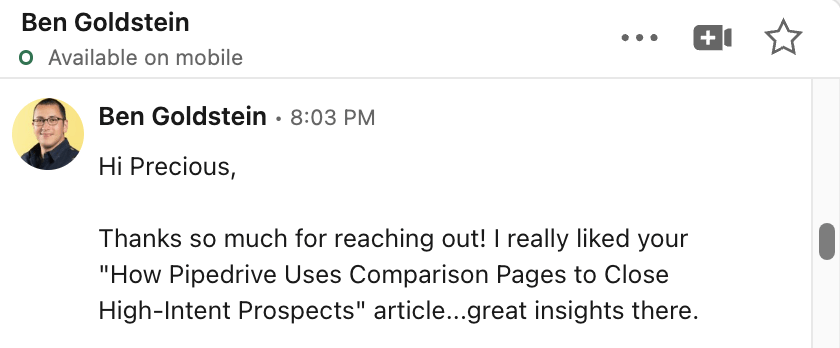
The Project
The first project we wanted to collaborate on didn’t work out. As Ben describes it:
The topic is maddeningly tough to find good info on.
Being open to other topics, Ben requested I pitch good ideas that come to mind.
To execute this, I conducted a content gap analysis to find keywords that Nutshell competitors ranked for, but Nutshell does not. Each of the 9 pitched ideas had keyword data, title ideas, suggested URL, my analysis of the SERP ranking possibility, and the estimated word count required.
The SERP ranking possibility helped us estimate how the primary keyword will rank on the SERP. This was vital because search engines are pivotal in the distribution of this piece to Nutshell’s target audience.
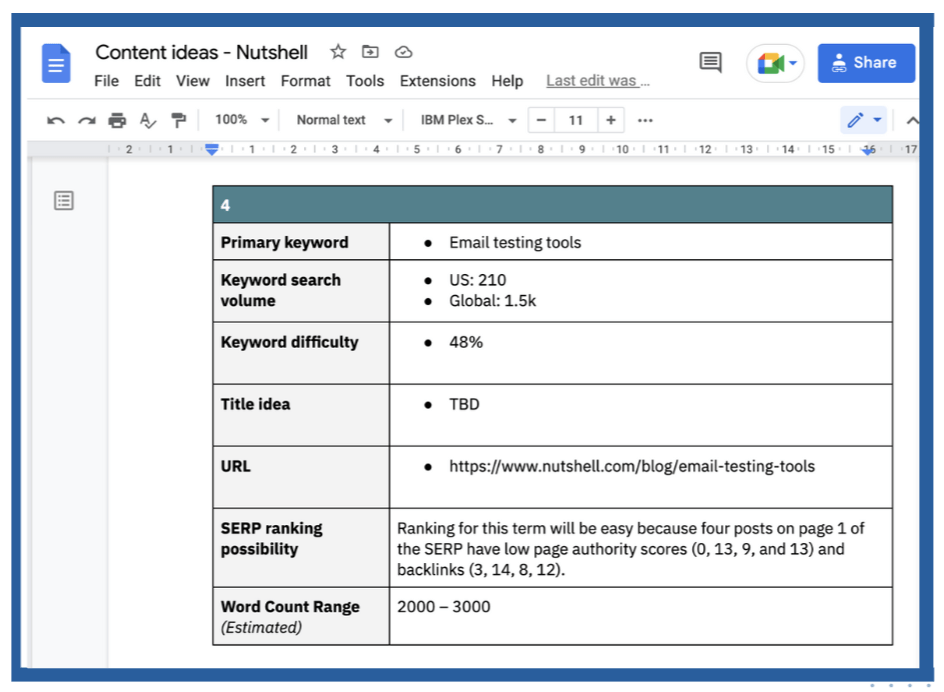
After approving the idea, I created a detailed content brief and outline. I also asked relevant questions that could help in pitching Nutshell in the piece.
Writing the Content
Ben wanted me to write a listicle about email testing tools. The challenge? Listicles are not a favorite content type for marketers, and here’s why:
- This is an overused format
- The content is often shallow
- There’s limited brand storytelling
Bottom line: This type of content has resulted in B2B audience fatigue. However, Nutshell’s piece was unique.
To build enthusiasm for readers, I pulled a page from my content research process and hunted recent insights from industry research reports. I got recent data from a Litmus report and used that to write a great introduction using the thesis, antithesis, and synthesis framework.
- A thesis is a popular and widely held viewpoint.
- An antithesis is a viewpoint that challenges the thesis by highlighting its problems.
- A synthesis is a viewpoint that resolves the problems.
Popularized by Ryan Law, the Director of Content Marketing at Ahrefs, this framework helps in creating a compelling argument based on information the reader knows.
In the post about email testing tools for Nutshell, the first sentence shares the thesis, a popular stat about email marketing ROI. The next sentence introduces the antithesis by stating that everyone can’t get the same ROI from email marketing. The synthesis explains the reasoning for the antithesis.
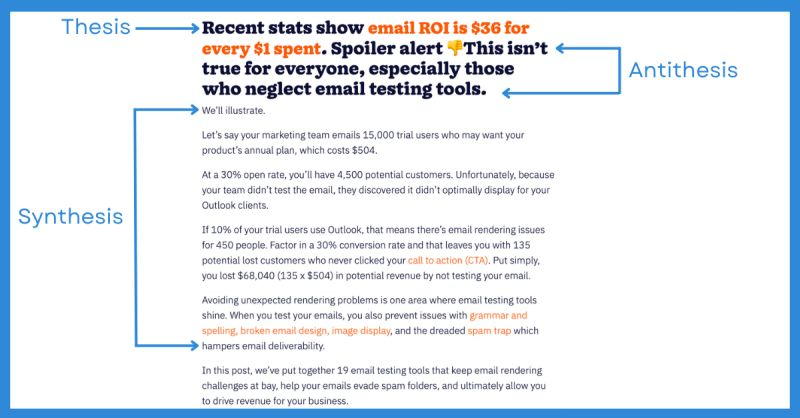
This approach makes the topic relevant, convinces the reader to keep reading the piece, and turns a boring topic into something interesting.
The intro is only a tiny section of the piece. Each tool required a blurb. As Ben puts it:
The blurbs are really informative.
On-page optimization followed with relevant keywords, a meta description, title tags, and alt tags, all included.
Results
After publishing the post on the 25th of August, 2022, it started ranking on page 2 of the SERP the next day. As of September 19, 2022, this post ranked on page 1, position 6. It has since snagged a brilliant spot on the SERP for the primary keyword ‘email testing tools.’
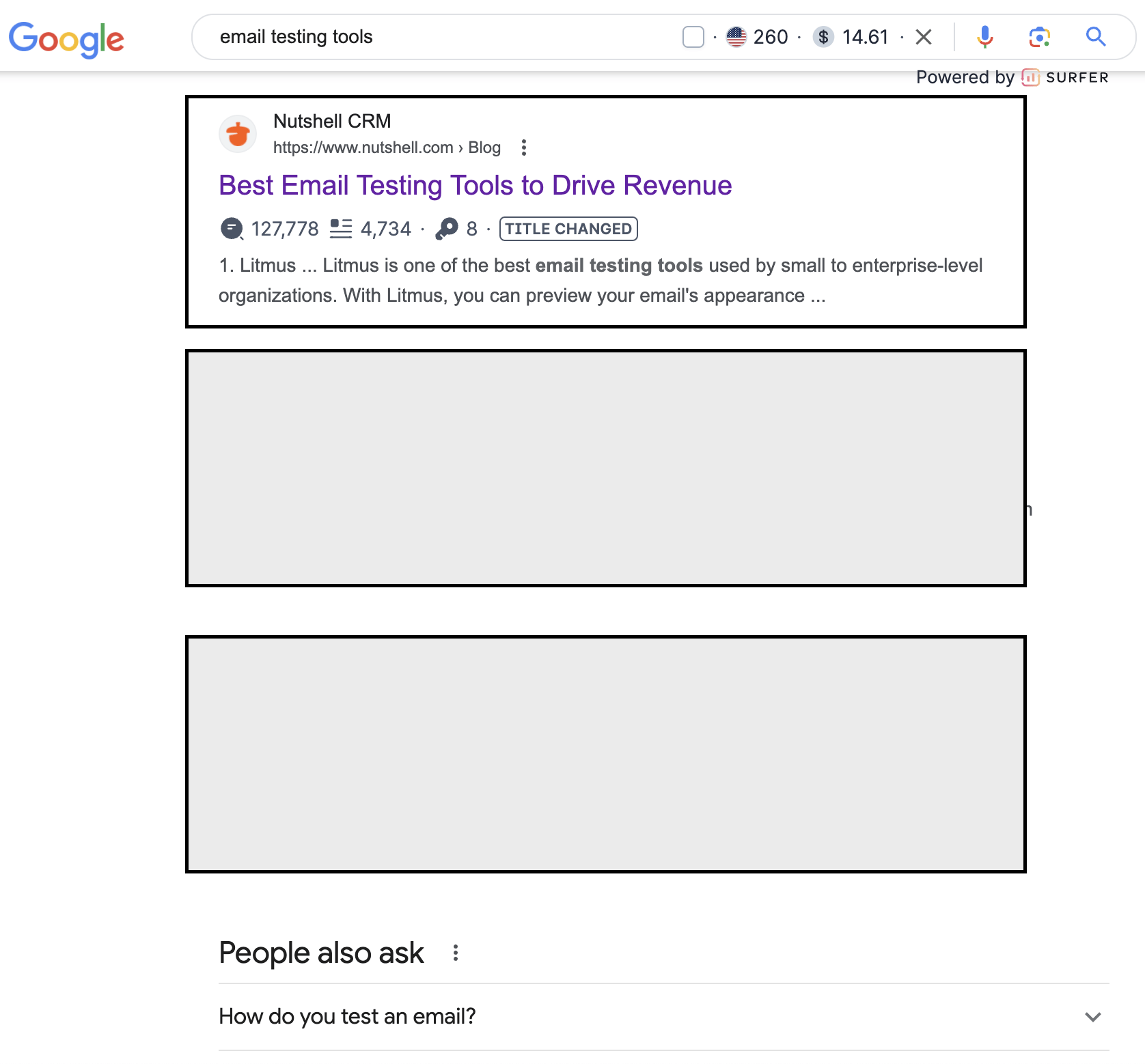
Getting Similar Results
The takeaway is this: give your readers a reason to continue reading your content. Create the best piece on a topic. Use recent data. Optimize for SEO. Doing these will help you win your audience with a content type that isn’t glamorous like listicles. Interested in getting similar results from your content? Contact us.



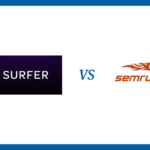
Leave a Reply
Want to join the discussion?Feel free to contribute!